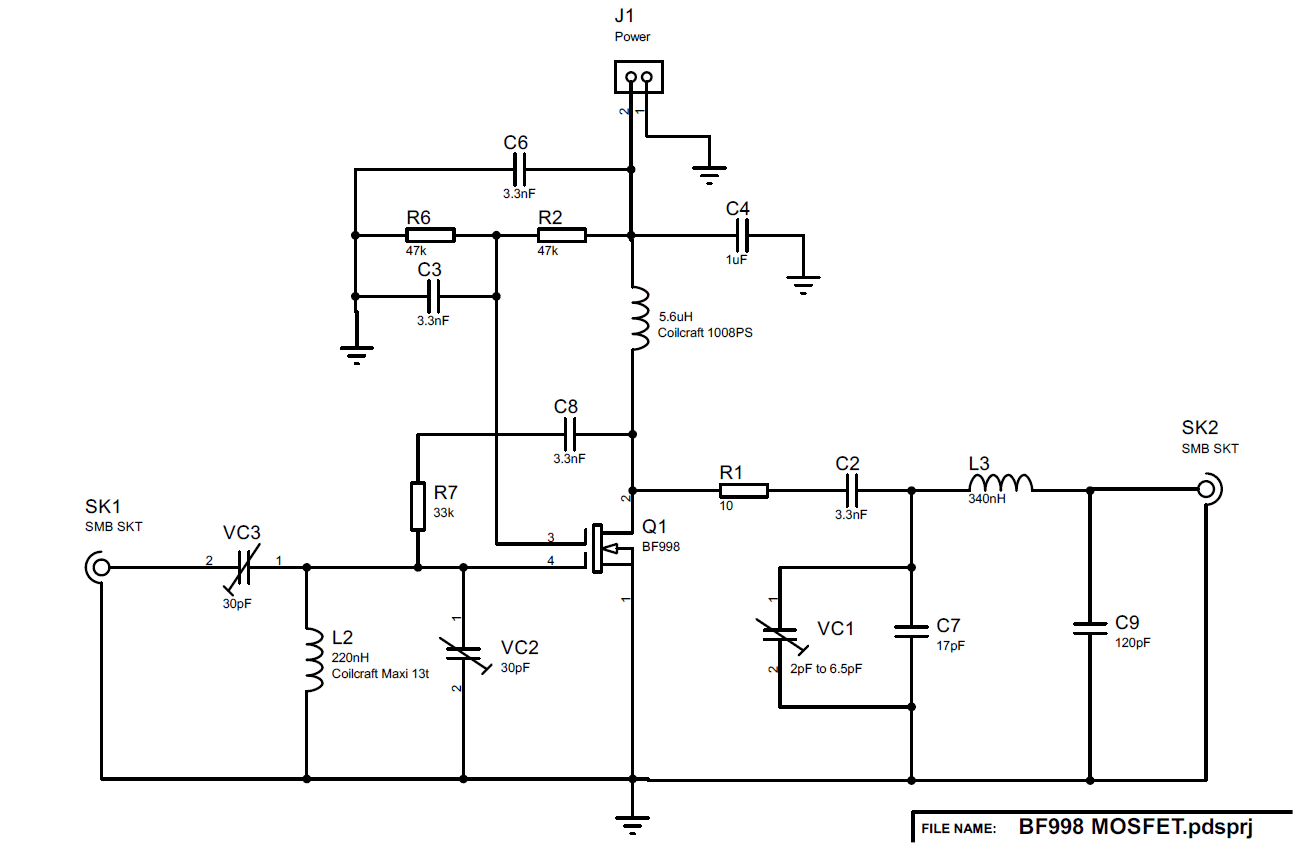
The schematic shows the new front-end amplifier based around a BF998 MOSFET. It has been designed to give ~23dB of gain and a noise figure of ~1.0dB. I was able to achieve 0.7dB noise figure but found the circuit could become unstable so feedback was employed to aid stability which slightly degraded the noise figure. The amplifier appears to be very stable I have checked it with S/C O/C and terminated by 50ohms. I don't possess a trombone so that's the best I can do at the moment.
During the design process I found designing for best noise figure did not coincide with the amplifier matched to a 50 system. It turns out that input looks more like (S11*) and has a very poor return loss. If you design for a 50ohm matched system the best noise figure you can expect is 3dB without the use of feedback. I also found it would be useful to be able to measure S11 and S21 at the same time. I am unable to measure both at present at the same time. The components added for stability are R7 and C8 the feedback components and R1 helps stability. R1 will impact on IP3 so keep it low as possible. I used Coilcraft Maxi for L2 and Coilcraft 2222SQ for L3. L1 is 1008PS screened inductor. All fixed capacitors and resistors are 0805.
Measurements
The operating conditions are :-
Power Supply 9V Current 10mA
The noise figure was measured using the subtraction method as I don't have a calibrated noise source. The noise figure was measured in a 10kHz bandwidth. The way you measure the noise figure using the subtraction method is as follows.
Calculated the noise level is a 10kHz bandwidth by the equation.
N(dB) = -174 + 10Log(BW) where BW is the desired bandwidth in Hz.
Now add the gain of the amplifier to the to the noise level.
N(dB Expected) = N(dB) + G(dB)
so for 10kHz and 23.3dB of gain the expected noise will be :-
N(dB Expected) = -174 + Log(10000) + 23.3 = -110.7dB
Now the average noise over this level will be the contributed noise of the amplifier ie: the noise figure.
so if the noise measured is -109.7dB them the NF is 1dB.
Amplifier Noise In A 10kHz Bandwidth

Frequency Response
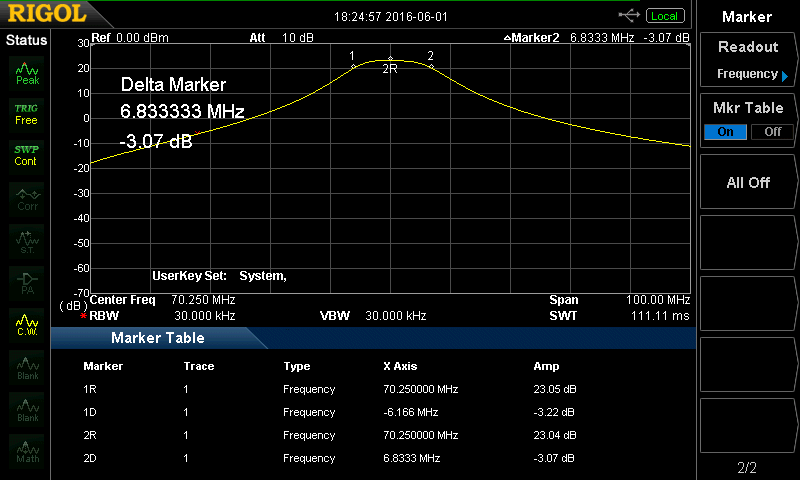
Gain 23dB
Bandwidth ~13MHz
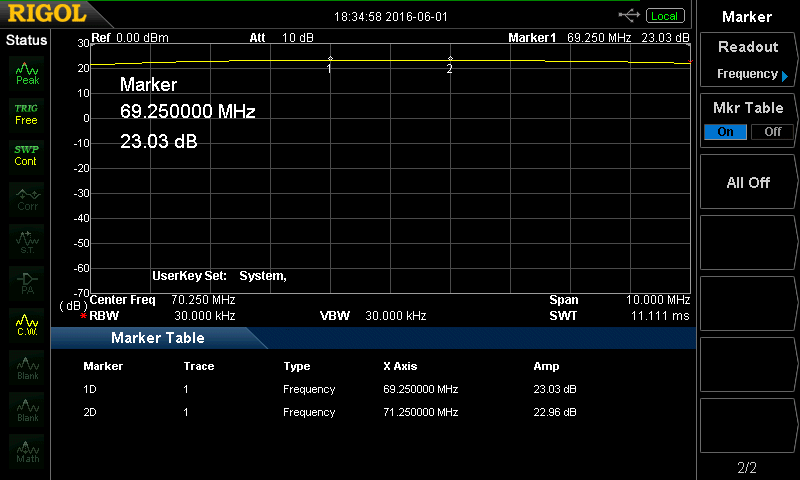
Gain Flatness
2MHz within 0.1dB
With BPF On The Output
Third Order Intercept
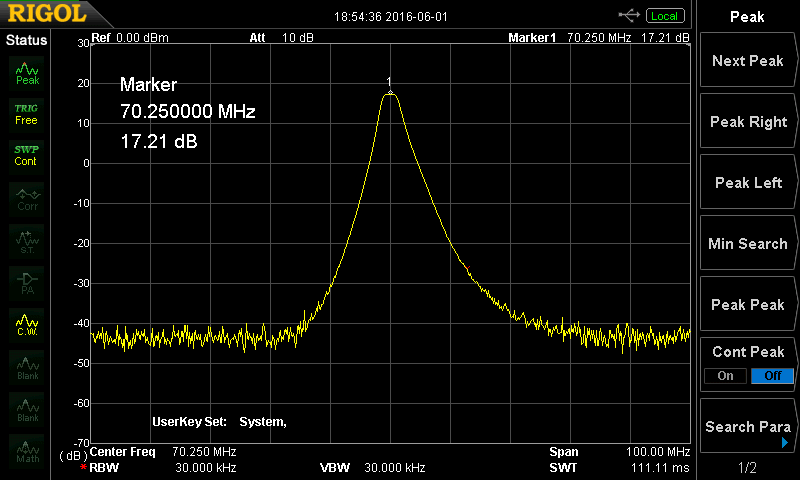
Gain ~17dB
Bandwidth 2MHz
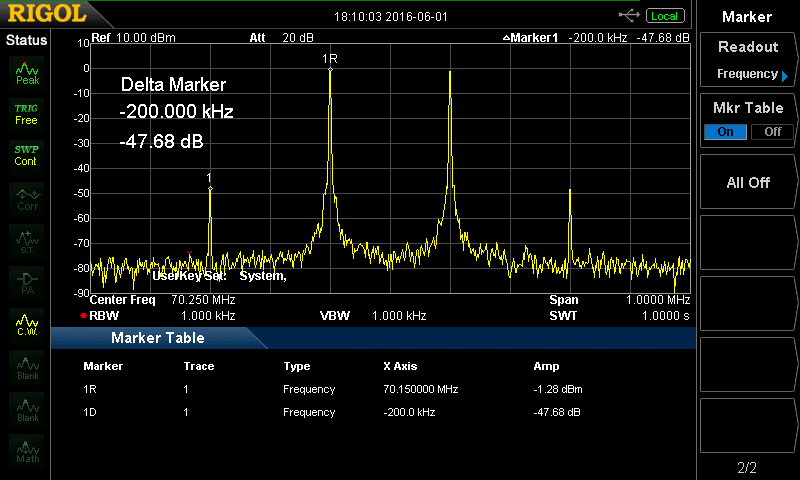
IP3 Output 22.7dBm
IP3 Input -0.3dB
Milled Prototype PCB
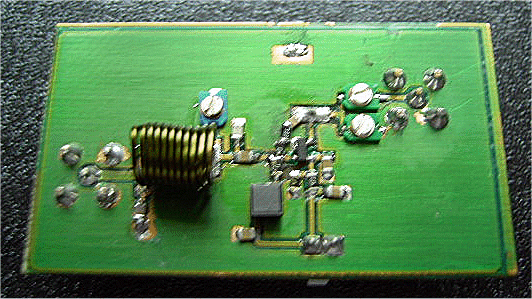
Bottom
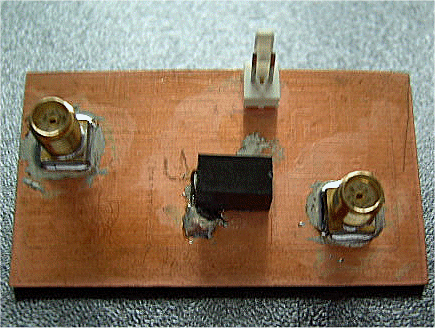
Top

